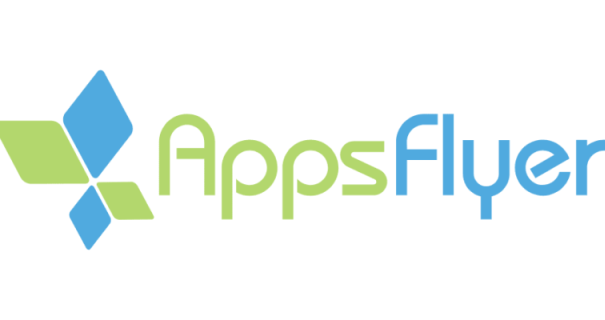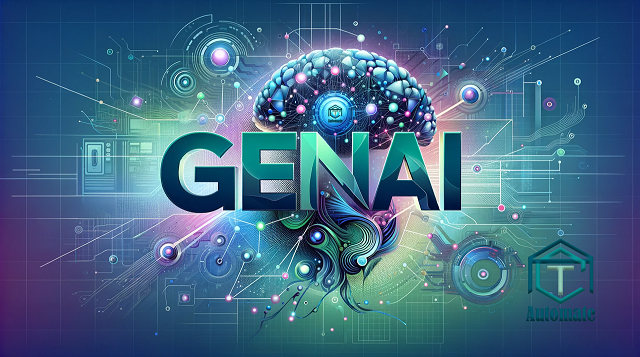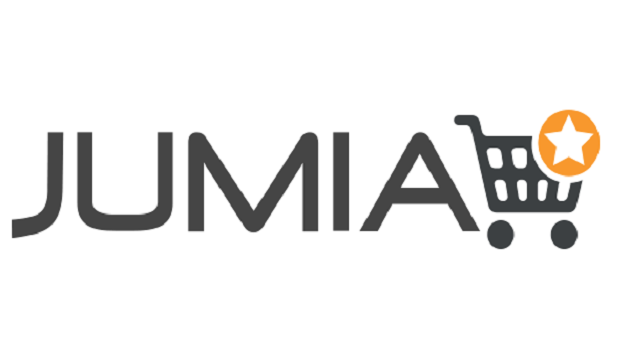E-Business
AppsFlyer Finds Economic Downturn Caused Declines in App Install Ad Spend Budgets

AppsFlyer has released the 16th edition of its Performance Index, ranking the top media sources in mobile advertising across 11 regions and 22 app categories.

The latest version of the Index, which originated in 2015, found the economic downturn had a significant impact on the mobile app media space throughout 2023, as nearly all top media sources saw declines and app install ad spend budgets reduced by 20% in the third quarter of 2023 when compared to Q3 in 2022.
“In a world where excellence is redefined by measurable outcomes, marketers around the globe are keen to boost efficiency, and unlock unprecedented success – the same applies to African marketers.
The key to shaping this future of business brilliance lies in embracing data-driven strategies – our latest Performance Index explores how unique economic conditions have impacted the overall market, providing valuable insights on marketing strategies during an economic downturn, and implores marketers to make the right decisions when it comes to budget allocations,” said Michael Zaitsev, Managing Director for Africa & CIS at AppsFlyer.
Apple Search Ads and Meta Lead the Way Across iOS Gaming and Non-gaming
The best way to properly depict the state of the iOS media market is by looking at a single source of truth (SSOT). AppsFlyer’s first ever SSOT iOS index combines SKAdNetwork and traditional attribution, and accurately deduplicates between the two data sources.
Apple Search Ads (ASA) is the #1 media source for iOS gaming apps and non-gaming categories, coming in at #1 in almost all the rankings across every region and every category with high quality and unmatched scale, particularly in non-gaming.
The dominance of ASA in non-gaming is even more pronounced than it is in gaming, coming in at #1 in all the rankings across every category and every region except for Latin America with unmatched scale and high quality.
Although still far from its dominant iOS position before iOS 14.5, Meta ads continues to adapt in the post iOS 14.5 era, coming in at #2 in the power and volume rankings (power rankings combine quality and quantity metrics while volume only covers quantity).
The social network’s performance is mostly fueled by non-gaming apps on SKAdNetwork, Apple’s privacy-centric attribution interface, where it drives the highest number of installs, well above the competition.
Google Ads came in at #3 in the rankings thanks to its scale among non-gaming apps. It should be noted that for Google, iOS is secondary compared to Android, especially when compared to its web business.
For gaming apps, Applovin ranked 5th in the global power ranking, driven by success in casual and hyper casual games, followed by Unity Ads in 6th place, thanks to a #4 rank in casual and hyper casual games. ironSource ranked 2nd globally in social casino, and 2nd in hyper casual games in Western Europe, Indian subcontinent, Latin America, and the Middle East.
For non-gaming, Meta ads ranked 2nd in the global power ranking, driven by its performance in Life & Culture where it ranked 2nd, while Google reached 5th place (3rd in the volume ranking) thanks to a #2 power ranking in finance. Snapchat and Moloco ranked 3rd and 4th, respectively thanks to top-notch quality.
E-Business
GenAI Adoption Among African workers Outpace Global Peers

Africa’s workforce is embracing artificial intelligence (AI) at a faster pace than global peers, but pressure is mounting for organisations to ramp up digital skills development as generative AI (GenAI) begins reshaping roles across industries.

This is according to PwC’s Global Workforce Hopes and Fears Survey 2025, which shows a continent ready for AI-enabled transformation, but facing a narrowing window to prepare, through skills development initiatives.
The survey, covering nearly 50 000 workers worldwide and 1 753 across South Africa, Algeria, Kenya, Morocco and Nigeria, finds that African employees are already integrating AI into daily operations.
Sixty-four percent of respondents in Africa used AI tools in the past year, compared to 54% globally, and the sentiment is overwhelmingly positive. While only 17% report using GenAI every day, confidence in its benefits is high: 76% believe GenAI improves work quality, and 72% expect AI-driven productivity gains within three years.
In SA, executives are even more bullish, as 91% say AI has already lifted both productivity and work quality — a signal that leadership is pushing harder toward AI-enabled ways of working, notes the survey.
However, this optimism is coupled with rising concern about future readiness. Only 35% of African workers believe their skills will still be relevant three years from now. With GenAI expected to affect nearly half of all job roles, PwC warns that the continent’s workforce risks falling behind unless organisations accelerate large-scale reskilling.
Despite the pressures, employees are not standing still. PwC notes that African workers outperform their global peers in proactive learning, recording 15% higher participation in skills-building and receiving 6% more support from managers. This indicates that both workers and immediate supervisors recognise the pace of AI adoption and are pushing to adapt.
PwC Africa people and organisation leader, Dr Dayalan Govender, says the moment calls for decisive leadership. Organisations, he argues, must integrate AI into workforce strategies, accelerate digital adoption, and expand upskilling programmes at scale.
“Africa’s workforce is optimistic and ready for change, but leaders must accelerate digital adoption and invest in future-ready skills to convert this optimism into sustainable growth,” he says.
Beyond the technology shift, the survey captures a workforce hungry for growth but constrained by financial pressure. Many employees are preparing to make career moves: 45% plan to request a raise, and another 45% aim for a promotion in the next year. Yet household financial stability remains strained, with only a third of respondents reporting any money left over for savings.
Still, Africa’s workplaces continue to show strong foundations of trust and purpose — elements PwC believes will be critical in navigating GenAI disruption. More than 55% of workers trust management, and two-thirds say their work feels meaningful, both above global averages.
With AI adoption rising and employees motivated to reinvent their careers, PwC warns that the coming years will determine whether Africa’s early optimism translates into long-term competitiveness as GenAI transforms the world of work.
The report calls for embedding AI into workforce strategies to bridge the gap between optimism and practical adoption, scaling upskilling initiatives to prepare for GenAI disruption, and fostering trust and psychological safety to retain talent and drive innovation.
“For employers, these findings are a stark reminder that they can and should do more to help workers understand, adopt, and embrace AI’s transformative power.
“Employers may need to pay special attention to entry-level workers, nearly a third of whom say they’re worried to a large or very large extent about AI’s impact on their future, even as they’re also curious (47%) and optimistic (38%) about its long-term societal effects,” notes the report.
E-Business
Nigeria Records Highest Weekly Cyberattacks in Africa — Report

Nigerian organisations are facing the highest volume of weekly cyberattacks in Africa, according to the newly released African Perspectives on Cyber Security Report 2025 by Check Point Software Technologies Ltd., a global leader in cybersecurity solutions.

The report revealed that Nigerian firms experience an average of 4,200 attacks per week, significantly higher than the continental average of 3,153 and 60 per cent above the global average of 1,963 attacks per organisation.
The findings highlight a sharp rise in attacks across Africa, driven largely by artificial intelligence-enabled threats.
Kingsley Oseghale, country manager for West Africa at Check Point, said attackers are increasingly using AI to automate phishing, impersonation, and cloud exploitation.
“AI has become part of the attack surface,” Oseghale said. “Attackers are using it to automate phishing and identity theft at scale. The only effective response is prevention-first security that combines visibility, governance, and AI protection.”
The report noted that cybercriminals are exploiting exposed identities and misconfigured systems to target critical sectors, including finance, energy, telecoms, and government.
Identity-led intrusions, AI-generated phishing campaigns, and multi-vector ransomware are on the rise.
Across the continent, Check Point identified key trends in different markets. Nigeria is experiencing business email compromise and cloud exploitation; South Africa faces rising ransomware, smishing, and botnet infections such as Vo1d and XorDDoS; Kenya has seen ransomware targeting critical energy infrastructure; and Morocco has experienced coordinated government and education-sector disruptions via DDoS and website defacement attacks.
The report highlights five major shifts shaping Africa’s cyber risk in 2025.
Traditional ransomware has evolved into data-leak extortion, AI-generated deception is widespread, and identity has emerged as the new security perimeter.
Weak cybersecurity, the report warned, can now affect international market access under regulations such as the EU’s NIS2 Directive, making digital resilience an economic necessity.
The study urged African businesses and governments to adopt prevention-first security strategies, including continuous risk assessment, regulatory readiness, and public-private collaboration.
Oseghale emphasised that, as AI reshapes operations, cybersecurity must shift from reaction to prediction.
“The real challenge is not adopting new technology but securing the trust that underpins it,” he said.
E-Business
Jumia’s Data Shows Nigerians Turning to Digital Retail to Navigate Inflation Pressures

As Black Friday 2025 unfolds across Nigeria, new insights from Jumia’s Q3 2025 financial results reveal that more Nigerians are relying on digital retail to navigate inflation and rising living costs.

The data points to a more deliberate, value-driven shopper, one using online platforms to stretch budgets, compare options quickly, and extract more value from each purchase.
Jumia reported a 30 percent year-on-year increase in physical goods orders, while Gross Merchandise Value for physical goods rose by 43 percent.
This stronger GMV growth highlights a clear behavioural shift: consumers are assembling higher-value baskets by combining essentials with premium or long-term household items. Online retail is serving as a tool for strategic planning, not just convenience.
According to Temidayo Ojo, Chief Executive Officer of Jumia Nigeria, Black Friday now plays a more critical economic role. “Households are using digital retail to defend purchasing power. They plan their lists, compare prices instantly, and rely on the reliability and convenience that e-commerce offers,” he said.
This year’s Black Friday trends show growing demand in categories that directly support daily living. Household essentials and FMCG products are seeing significant uptake as families stock up during price drops. Home and kitchen equipment is also experiencing stronger demand as shoppers prioritise practical, durable tools. Affordable fashion and beauty products are gaining momentum as discounts make them more accessible.
Consumer behaviour in the lead-up to the sales period further reinforces this shift. Jumia recorded a notable increase in “Add to Wishlist” and “Add to Cart” activity, signalling more planning and fewer impulse purchases. The gap between GMV and order growth indicates that customers are optimising baskets using bundles, vouchers, and promo combinations, behaviours uniquely suited to digital platforms.
With inflation intensifying the need for smarter buying, trust markers on Jumia, such as verified sellers, official brand stores, ratings, and clear return policies, are becoming more central to decision-making. Authenticity and durability now outweigh the appeal of the lowest price.
Jumia’s logistics footprint is making these benefits available nationwide. Its 30,000 sqm Isolo fulfilment centre, 480 pickup stations, and 62 logistics partners ensure that customers in secondary and peri-urban cities enjoy the same deals as those in major hubs, reducing travel burdens and adding financial value.
Overall, Jumia’s Q3 data and Black Friday trends show that Nigerians are turning to digital retail as a practical, strategic response to inflation, using e-commerce to manage budgets, preserve purchasing power, and make more informed buying decisions.

 News3 days ago
News3 days agoPAPSS Cowry to Benefit Manufacturers, SMEs

 General News3 days ago
General News3 days agoManufacturers Block More Ransomware, But Data Theft Surges – Sophos Report

 Telecom3 days ago
Telecom3 days agoMTN Nigeria Launches Y’ello Data Gifting Campaign as Digital Connectivity Shapes Festive Celebrations

 E-Financial3 days ago
E-Financial3 days agoAccess Bank’s Digital Innovation Earns Top Financial Inclusion Award

 E-Financial3 days ago
E-Financial3 days agoCBN’s New Cash Policy: A Welcome Liberalisation or a Risky Retreat?

 Broadcasting3 days ago
Broadcasting3 days agoNIPR Postpones Maiden PRICE Awards to January 25, 2026

 Telecom3 days ago
Telecom3 days agoAfrica Must Build Its Own Cybersecurity Intelligence, Says Tizel CEO At AfriTech 5.0

 Telecom3 days ago
Telecom3 days agoMTN Partners with SMEDAN to Drive Digital Growth and Job Creation Nationwide

























